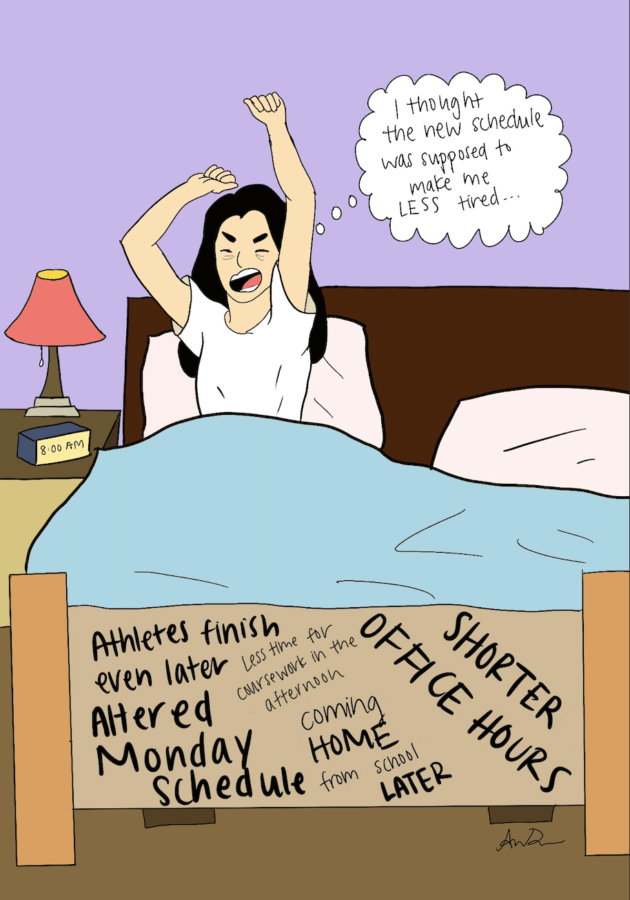Portola Cannot Sleep on Pushing Back School Start Time
With California SB-328 coming close to pushing back the school start time 30 minutes, students and staff alike should carefully consider the implications that come with the push, such as the possibility of later end times and shortened breaks.
New California legislature is in the process of bringing change to students across the state in the form of a later school start time. On Oct. 13, Gov. Gavin Newsom and California Secretary of State Alex Padilla approved and chaptered California Senate Bill 328.
According to the bill, “the schoolday for middle schools and high schools, including those operated as charter schools, is to begin no earlier than 8:00 a.m. and 8:30 a.m., respectively.”
Given that Portola already has an 8:30 a.m. start on Tuesdays and Fridays, only the schedules on Mondays, Wednesdays and Thursdays need to be altered. Although many students may be celebrating the thought of being able to get more sleep, they should be concerned about the consequences of drastic schedule changes that may follow, such as later end times, shortened office hours or later sports practices and games.
According to the National Center for Education Statistics, California high schools must have 1,080 hours of instruction time in a school year to meet the state education reforms, so simply cutting down class time is not a viable or legal option.
“In the bill, they don’t count zero periods, so a workaround could possibly be going [period] zero through seven. You still have an eight period day, but the first period of the day is a zero period. It’s just semantics,” principal John Pehrson said.
Since office hours on Wednesdays and Thursdays takes up a sizable amount of the day (39 minutes), a possible solution aside from the zero period workaround is to cut down nine minutes from office hours, then push back the start and end time of each period by only 21 minutes, which together will account for the 30 minutes lost in the morning. Since there is little flexibility on Mondays, it would be necessary to simply push back the entire school day by 30 minutes.
“If school starts later, it would probably also mean that school ends later, which means I could possibly still be just as tired because I would be up later doing my homework,” junior Wesley Tjangnaka said.
With a later end time, there are bound to be more conflicts with athletics programs and scheduled games, given that coaches try to organize games as early as possible to let athletes out as early as possible.
“If we’re starting late and getting out later, that means a two o’clock departure [for sports teams] means missing more class,” Pehrson said. “The problem is when you start going too late, it does affect end times and ultimately athletics, games and daylight.”
While the new regulation is poised to induce a temporary productivity boost during the school day for future students, we ultimately can not overlook the thorough planning necessary for an effective restructured school day— slight cuts to nonessential parts of the school day to prevent pushing back the end time too far is an ideal solution to consider going forward.
Your donation will support the student journalists of Portola High School. Your contribution will allow us to purchase equipment and cover our annual website hosting costs.

Manan Mendiratta is the Sports Editor for the 2019-2020 school year. This is Manan’s first time in the Portola Pilot, so he is extremely excited to contribute...

Akshay Raj is your co-editor-in-chief of the Portola Pilot this year. In his final year as Portola Pilot staff, he is beyond excited to help bring...

Annie Qiao is your 2019-20 Arts & Entertainment Editor for her fourth year at the Pilot! As a passionate admirer of the arts, she hopes to bring a...




